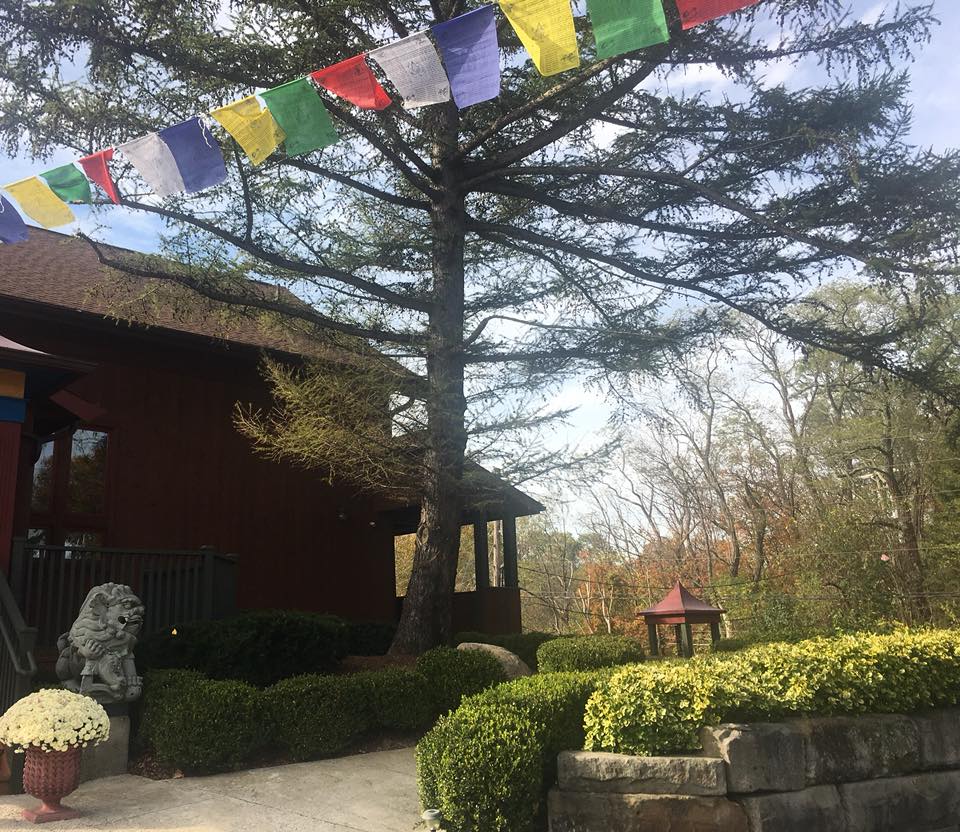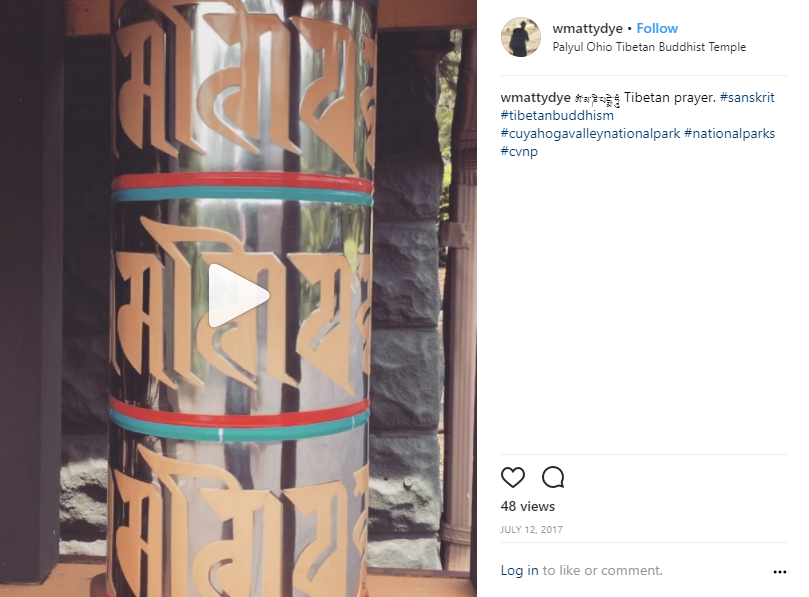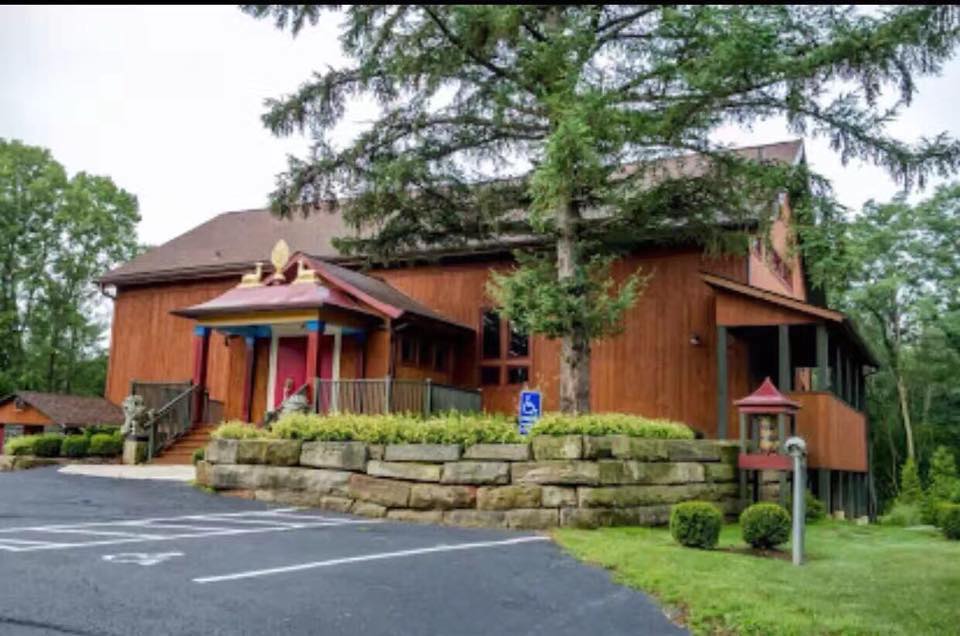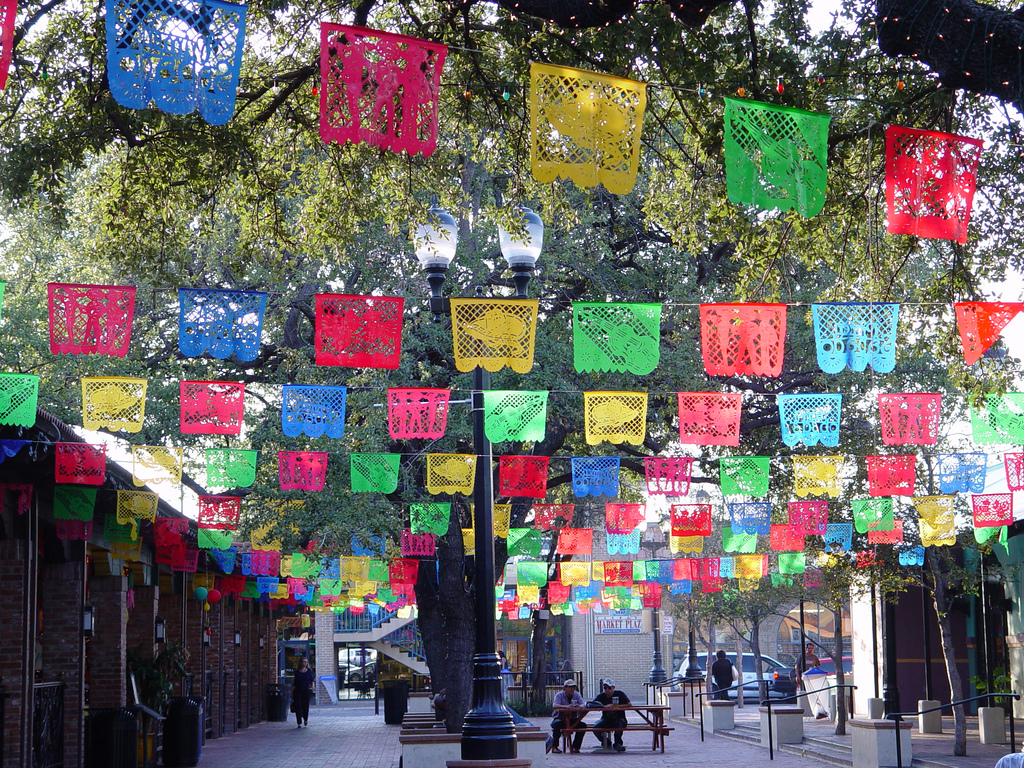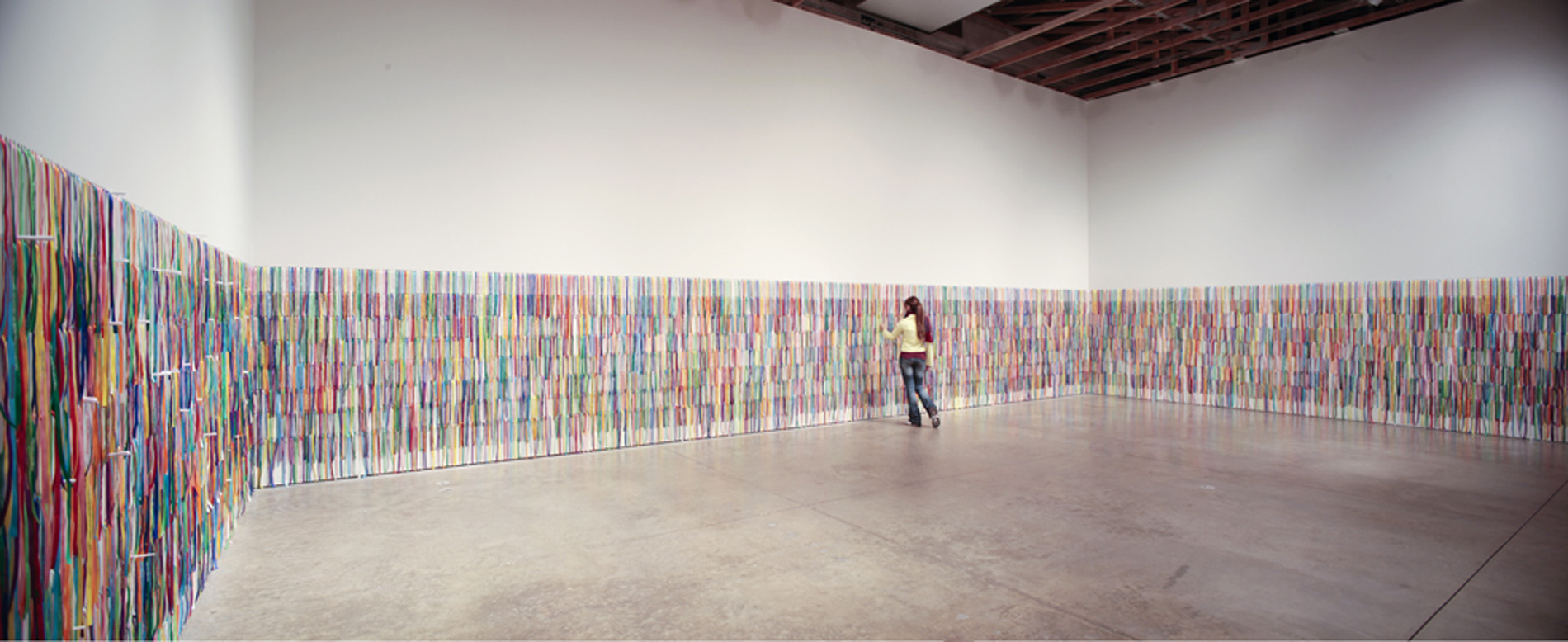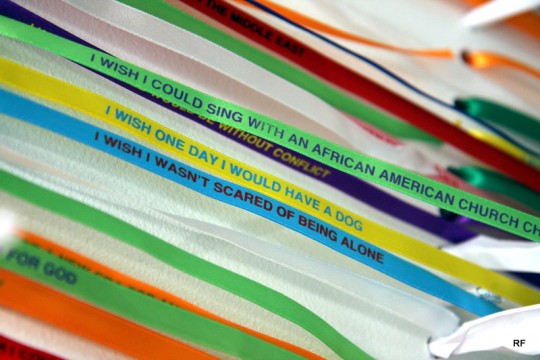Cultural Tourism
Tucked into the rolling hills and winding forest roads of Richfield lies Palyul Buddhist Temple, similar in many ways to many of the structures in Richfield: large, open, barnlike, beautifully maintained and landscaped. But its details are richly unique to the majority of locals, as well as for me: stylized lion-dragons and llamas guard the door, sanskrit text and bright, cheery colors... the celebration of colors in the trim and in the flags that can be seen through the trees are what draw me most.
I want to go inside. I pulled into the driveway once, years ago, back when everything felt new and the potentiality of experience took up my entire field of vision, and it never occurred to me that I could be perceived as threatening to anyone in any context. Even then, I was hesitant to get out of my car. I stared admiringly for a minute, and then drove off.
I found their website, I still check it from time to time. They have days on their calendar that specifically note that guests and outsiders are welcome to come observe. But still somehow it feels intrusive to me to go. I have no intention of becoming Buddhist, it's just curiosity and love for their colors and designs.
The problem in my mind boils down to what percentage of my curiosity is entitlement? What subconscious motivation to explore is tied in some way to a primal urge to colonize? I don't think I want to go into that environment and change it in any way, but I am aware now that my presence changes an environment and I can't unknow that.
Shown: photos from Palyul Ohio Vajrayana Buddhist Temple
There are other, equally fraught examples of this line of thinking that prevented me from making a new connection: Young Kings was a record store that existed briefly down the street from SPACES’s Hingetown location when we first moved in. SPACES occasionally worked with them on projects that affected the neighborhood. They were associated with RA Washington, a Cleveland polymath, iconoclast, and leader, and the force behind Guide to Kulchur, not only one of my favorite bookstores, but one of my favorite places, period. My interactions with Young Kings through SPACES was meaningful to me; I knew that they were generating valuable discussions and brought a much needed voice to the collection of businesses in that small corridor. Not to mention a truly fantastic selection of music (there was an evening event at SPACES that featured a panel of musicians and artists that remains one of my favorite SPACES events to date.)
At the time, I didn’t have a record player, and so a more generous assessment of why I never went in includes the fact that I had no need of vinyl records. But I love music, and I love conversation, and here was a place I routinely walked past that offered both. Then one day as I walked past I realized they were gone, and in researching what happened I saw a lot of speculation that the rapidly shifting demographic of the area, in which SPACES played a key role in, contributed to the un-tenability of them being able to stay in that space. Some comments suggested that if more of the moneyed white people that have taken over the neighborhood had gone in and bought stuff, maybe Young Kings could’ve stayed. Maybe they’d have wanted to.
And so, my central concern is this: is it respect, or fear, that keeps me from engaging with new people? And is it my own selfish justification to feel that when I don’t go to new places and don’t meet new people, I’m cheating us both out of the benefits of that interaction?
Here’s the problem in reverse: I read an article (a few years ago, sorry, no link) about how straight women flocking to gay spaces is entitlement. The writer was convinced that the problem extended beyond Bachelorette Parties: that most bars were for straight people explicitly, and so gay bars ought to be only for gay people. Many commenters took issue with this thesis, arguing that the problem was large groups of straight women who intend to stay in their unwieldy clique all night, or women who came to gay bars to “be wild,” use the men on the floor as dancing props, and generally behave disrespectfully. Still others mentioned that many straight women feel unsafe in straight bars, which is why they want to hang out at gay bars, and can do so in unobtrusive ways.
But still, ever since, I have been acutely aware of my presence at Square, the bar in Akron that used to be, in my mind, the place I had my first cocktail, a space that was clean and where people looked out for each other. Now I do feel like an intruder, even when I’m there with and at the invitation of my gay friends. The point isn’t my feelings; on some level I always was an infiltrator, and now I’m simply less clueless. But there’s something else there, too. Because if I had never been to Square, when someone said “gay bar” I don’t think I would imagine Square. And I definitely wouldn’t have the personal, specific connotations that I do have, and that come only come from direct experience.
Shown: Papel picado (celebratory Mexican paper flags), Rivane Nuenschwander’s I Wish Your Wish, Yoko Ono’s Wish Trees
Being drawn to a place earnestly, even with the intent to simply observe, commune respectfully, etc, does not does not mitigate the effect my presence has in that space. But how does one acquire specific, meaningful connotations about outside influences without experiencing them? This is why people travel, and surely, even taking into account the irreparable damage done by bad actors over time, the resulting crossing of cultures is a net gain for all parties. Perhaps if I could observe a thing without wanting to copy it, to take it, to change it, to make it my own, my presence in spaces that are not explicitly for me would be less of an offense? Is this desire to mirror new things human, or is it the white belief that it ought to be my right to do as I please at the core of my seeking out other cultures? I am increasingly conscious of the white desire to own things we like, to create identity through objects, and to use other cultures as identities to try on, and I can’t be made unaware.
My final confession is this: I have Tibetan prayer flags over my desk at work. Years ago I did a prayer flag art project using the colors of the flags and elements of Tibetan design, and have thought about revisiting those ideas in a new project. My understanding of the purpose of prayer flags is that prayers for the community are printed onto colorful fabric and strung up over hilltops and through town. The wind catches the good sentiment and carries it over the land. It’s a beautiful idea, one that brings me joy to see and learn about, and I want to multiply that joy out into the world.
But when I made flags, the prayers I wrote weren’t Buddhist. I put out blank flags for others to write down their own wishes too. Isn’t it vandalism to think you have the right to change someone else’s property, in this case, a culture that isn’t mine, and the height of entitlement to write my own thoughts over them, and attempt to gain attention and recognition for these thoughts, which weren’t my own or my ancestors? Another kink to consider is that there’s debate about whether the practice creating and flying prayer flags in Tibet predates Buddhism.
All culture is a collage, and every action each of us makes is an up vote or down vote towards potential futures. The only building blocks we have are the past. But how do we interact with each other respectfully, equitably, and genuinely?
I’m still left with more guilt over not visiting Young Kings than I have in visiting Square (which I still do.) A search this week revealed that at least one of the owners is now running Brittany’s Record Shop in Slavic Village. And now I have a record player. Maybe there is a golden ratio of self-awareness that leads to respectful interaction, coupled with a lack of self-consciousness that will allow me to go.

